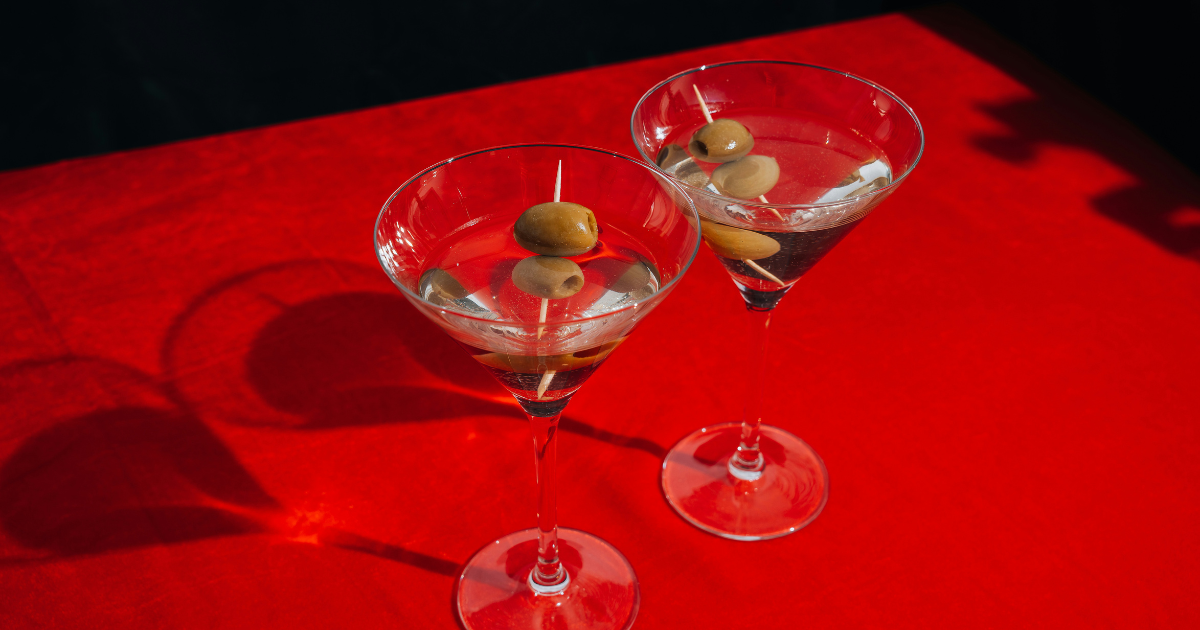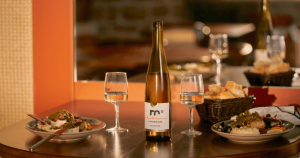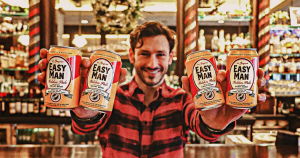I imagine I’m not the only one with the following dilemma. In my view, the gin martini is a top tier cocktail—perfection in a glass. The bold, bracing gin is perfectly cut by the dry vermouth’s unique combination of floral, fruity, and herbed notes. That mixture is finished with a savory olive or citrusy lemon peel garnish. For me and for many others, it’s hard to beat a classic, ice-cold gin martini.
A particularly boozy choice
But the martini has one obvious drawback: its high alcohol content. Martinis can easily contain 2.5 to 3 oz of gin (or vodka), plus another 1 oz or so of vermouth. Aside from the garnish, every ingredient is alcoholic.
As I continue to reduce my consumption of alcohol, I find that high alcohol content cocktails don’t have as much of a place in my personal rotation as they used to. I love them, but they’re increasingly incompatible with my health priorities.
Indeed, the popularity of the classic gin/vodka martini seems to be waning over time. A common drink for many Baby Boomers and Silent Gens back in their days, the martini is more often a special occasion drink today. Even so, the iconic martini glass still gets plenty of use from espresso martinis and other lower alcohol content cocktails. I suspect that a conscious desire for less alcohol is part of what’s driving that shift.
What can we do?
My first solution to this dilemma isn’t a very satisfying one: the M word. Moderation. These days, I only seldom allow myself the indulgence of a martini and I never have more than one.
If that sounds like a terrible solution, consider the upside: every martini I have these days is a really good martini. Am I going to waste this quarter’s martini on a well drink? No, I’m going to wait to order one until my next visit to Bemelmans or Keens and I’m going to savor every sip.
A second solution is the non-alc martini, a cocktail that pushes the limits of the still-young adult non-alc category. Bear in mind the following when mixing a non-alc martini:
- Make it very cold. Important with alcoholic martinis, too, but crucial for the non-alc version.
- Use a distilled botanical spirit in place of the gin/vodka. If ever there ever was a cocktail perfectly suited to exploring the interesting botanical flavors of these spirits, the martini is it. Distilled botanical spirits can be overshadowed by mixers and juices in other cocktails, but the martini lets their flavors shine.
- MYOV. There are only a couple of non-alc dry vermouths on the market and it may be hard to get them where you are. If you have herbs, a little time, and some non-alc white wine, try making your own vermouth.
- Increase the ratio of dry vermouth to gin (or vodka). Even if you like your alcoholic martinis dry, I recommend a minimum ratio of 1:2. Some even go as high as 1:1 for the non-alc version.
- Use bitters. Most people today don’t consider bitters to be an ingredient in a martini, but historically they were used much more commonly. I like Scrappy’s Celery Bitters and Fee Brothers’ Cardamom Bitters for this purpose. They’re alcoholic, but because I use so little, they add only trace amounts of alcohol to a non-alc martini. There are also great non-alc bitters options like All The Bitter.
- Tinker. Adjust the gin to vermouth ratio. Use more than one bitters. Go crazy. Enjoy the process of experimenting and discovering your preferred blend. You’re probably not going to nail it the first time, but that’s the fun of it.
If neither moderation nor non-alc martinis are a good solution for you, try scratching that itch with something similar but different: the savory cocktail. Savory cocktails, many of which are served in martini glasses, are having a moment. Many savory cocktails are adaptable with non-alc spirits to make low and no-ABV variations.
About the author
Douglas Watters is Co-Founder of Dry Atlas. Previously, he opened America’s first booze-free bottle shop, Spirited Away. For more from Douglas, follow him on LinkedIn.






